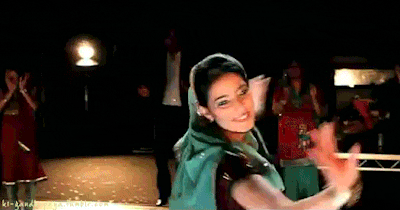Seeing as this is the last time I may be writing this topic as a blog, I thought I would share some thoughts about what good bhangra is. Of course, bhangra allows you to express yourself in any way you wish, and you can make at unique as you want to take it. Nonetheless, there are still those moments in a dance choreography set or the small elements that make the whole performance better. There have been numerous competitions across the years, and it is a challenge to bring something new to the table every year. Yet, teams have been able to do this every time. The most impressive parts of dance sets are things beyond the choreography. You have to look good as one group, meaning you have to be synchronized. You have to take risks in the things you do and be creative. And of course, you have to show the biggest, confident energy you have on stage. This last part of energy is something all rubrics will have at competitions, and it makes the sets much better. Tied along with the energy you present on stage is the “nakhre” you show on stage. Nakhre means attitude in Punjabi. By attitude, we mean the proper expressions during the different segments of your dance. The biggest association with nakhre is that you are genuinely smiling and genuinely enjoying yourself of stage. Not only are you, yourself, having fun, but you are also looking at your teammates and sharing the love on stage with them.
Considering these elements beyond the choreography itself, you can create a bigger picture of what bhangra is about. I aimed to highlight these aspects throughout my blogs. Now, I want to bring it all together and show you my favorite performance from a team. The following video is from a competition in Washington DC called Bhangra Blowout, and is one of the biggest collegiate competitions for bhangra teams. In 2016, CMU Bhangra put on the best performance I have seen.
Video from Harjot Hundal Channel on Youtube
Watching their performance never gets old. Each time I watch it, I am amazed by the synchrony, creativity, simplicity, nakhre, and so much more. From the beginning, they open with a mela scene which is a depiction of a fair or festival where people gather and socialize in India. This encapsulates the rich history portrayed by bhangra. Then, as they transition into their dance, they start very simple with their moves. The powerful part of this is that they are all moving together as one unit. They are stronger together. As they continue with their set, they will continue to be in sync. They introduce great creative elements in the remainder of their choreography as well. Not many teams would have a live musician come out on the middle of their stage, but CMU took the risk. This risk added beautifully to their performance and it showed once again how simple bhangra can be by just dancing on the beat of one instrument. Their energy keeps elevating, and none of the dancers show that they are tired. They continue showing their best performance. Lastly, I wanted to make note of the nakhre and stage presence they have. They are always smiling, and they are always looking at one another showcasing the love between each team member. Everything was able to work together, and they were able to secure a first place win at the competition.
There are more performances that you can watch on the same channel, and they all show the great creativity and energy of bhangra teams. Hopefully it makes you want to join them and dance too!













